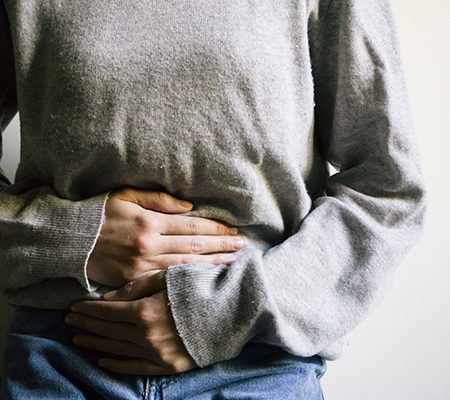Period pain can be a sign of endometriosis.
 Endometriosis is a common cause of pelvic pain and infertility in women, when the uterus’ inner lining — the endometrium — ends up outside the uterus “where it’s not supposed to be,” said Joshua Sampson, D.O., OB-GYN with Marshfield Clinic Health System.
Endometriosis is a common cause of pelvic pain and infertility in women, when the uterus’ inner lining — the endometrium — ends up outside the uterus “where it’s not supposed to be,” said Joshua Sampson, D.O., OB-GYN with Marshfield Clinic Health System.
Women’s health providers care for many patients with endometriosis and about six million women nationwide in reproductive ages have the disease. According to endometriosis.org, its cause remains unknown.
Endometriosis, Dr. Sampson said, is mostly found in the pelvis but rarely can be in distant sites, like the lungs. It typically spreads when you have your period and endometrium goes other places rather than through the vagina and out of your body. Some works its way out through the fallopian tubes, which is the most common cause of spreading. Laparoscopy and biopsy is how to definitively diagnose.
“A common symptom is severe pelvic pain during your period,” Dr. Sampson said. “It’s pain that can be debilitating and impact daily living to the point of missing work or school. It often correlates to the menstrual cycle but could happen at other times such as before and after periods, during ovulation, bowel movements, urination or during sexual activity.”
Symptoms don’t indicate severity. Some women have great pain but fewer lesions while some with many lesions have minimal discomfort.
What causes the period pain?
Endometriosis responds to estrogen fluctuation through a woman’s cycle. Lesions grow in small, confined spaces and gradually enlarge, causing inflammation and pain.
“Normally, endometrial tissue is shed through the vagina, but in a confined, small space it stays and grows again in the next cycle,” Dr. Sampson said. “Your body tries to reabsorb the blood, but this can create inflammation and scarring.”
Who’s at risk?
Endometriosis is more common in women in their reproductive years and can occur anytime from their first through their last period.
Risk factors include:
- Family history
- Early age of first period
- Late menopause
- Short menstrual cycles
- Uterine abnormalities
You are at less risk if you had multiple pregnancies, breastfed for long periods (over six months) and had an onset of periods after age 14.
You may have difficulty achieving pregnancy because of scar tissue, adhesions and inflammation linked to the disease that could interfere with sperm and egg function.
Treatment is key
Hormonal suppression can manage symptoms through child-bearing years, Dr. Sampson said.
“An unfavorable environment for endometriosis is created when patients utilize hormonal contraception like estrogen and progesterone combination medications such as birth control pills, patch and ring, or progesterone only methods such as intrauterine devices, subcutaneous implants and injectable progesterone,” he said
A doctor can perform procedure to relieve symptoms, like cauterizing or removing lesions. This is typically done through minimally invasive surgical method such as laparoscopy. Doing this with advanced minimally invasive methods minimizes post-operative discomfort and time away from normal activities.
“Many times, this provides relief and can tide women over to menopause,” Dr. Sampson said. In severe cases, you may need to remove the uterus and fallopian tubes. Your provider may consider ovarian removal is necessary after thorough discussion of risks and benefits.
Talk to your primary care or women’s health provider if you have severe and incapacitating periods or other symptoms suspicious for endometriosis.
“If you have pain, it’s good to have it diagnosed so you can learn how best it can be treated,” he said.
For women’s health care, visit Marshfield Clinic Health System.
Find a women’s health provider Message your primary care provider
Related Shine365 articles
8 signs it’s time to see a gynecologist
Is sex painful? 4 reasons to talk to your doctor

